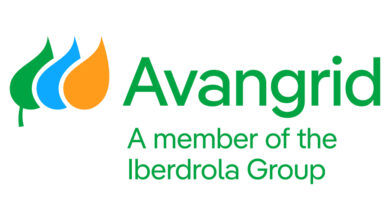Global Market for Nanocoatings in the Medical Industry (2021 to 2030) – Profiles of 107 Companies – ResearchAndMarkets.com

DUBLIN–(BUSINESS WIRE)–The “The Global Market for Nanocoatings in the Medical Industry 2021” report has been added to ResearchAndMarkets.com’s offering.
In medical and healthcare facilities it is necessary to equip materials and surfaces with a high level of hygiene using antimicrobial agents to protect them against bacteria and other micro organisms to prevent infections caused by bacteria and contribute significantly to reduce health costs. Challenges in medical device coatings include:
- biocompatibility;
- coating adhesion;
- uniform coverage over challenging shapes;
- strength;
- durability.
Benefits of nanoscale coatings in this sector include long lasting antimicrobial effect, constant release of the active substance, effectiveness against bacteria and other micro-organisms, no chemical impurities, easy processing, no changes to the characteristics of the equipped material, and no later discolouration of the equipped material. Nanocoatings are already finding application in life sciences & healthcare in enabling anti-bacterial surfaces for medical catheters, added to paints and lacquers used to coat operating tables, door knobs and door handles in hospitals and as ultra-hard porous coatings for surgical and orthopedic implants like screws, plates or joint implants.
The medical market will be a high growth area for nanoscale coatings over the next 5-10 years, and this is reflected in the high number of companies exploiting technology in this area, especially in the anti-microbial domain. The main market driver in this area is the prevention of the spread of deadly infections in medical facilities. Drug-resistant bacteria, the so-called “superbugs,” are a growing problem in hospitals worldwide and poor hygiene among staff is often blamed for the spread of such infections.
Report contents include:
- Advantages of nanocoatings in the medical and healthcare industry.
- Types of nanocoatings.
- Anti-viral and anti-microbial nanocoatings industry analysis.
- Types of nanomaterials utilized in medical nanocoatings.
- Profiles of 107 companies.
Key Topics Covered:
1 EXECUTIVE SUMMARY
2 NANOCOATINGS TECHNICAL ANALYSIS
2.1 Properties of nanocoatings
2.2 Benefits of using nanocoatings
2.2.1 Types of nanocoatings
2.3 Production and synthesis methods
3 NANOMATERIALS IN MEDICAL NANOCOATINGS
3.1 Metallic-based coatings
3.2 Polymer-based coatings
3.3 Graphene
3.3.1 Properties
3.3.2 Graphene oxide
3.3.2.1 Anti-bacterial activity
3.3.2.2 Anti-viral activity
3.3.3 Reduced graphene oxide (rGO)
3.3.4 Application in medical and healthcare
3.3.4.1 Anti-microbial wound dressings
3.3.4.2 Medical textiles
3.3.4.3 Anti-microbial medical devices and implants
3.4 Silicon dioxide/silica nanoparticles (Nano-SiO2)
3.4.1 Properties
3.4.2 Application in medical and healthcare
3.4.2.1 Antimicrobial and antiviral activity
3.4.2.2 Easy-clean and dirt repellent coatings
3.5 Silver nanoparticles (Ag-NPs)
3.5.1 Properties
3.5.2 Application in medical nanocoatings
3.5.2.1 Textiles
3.5.2.2 Wound dressings
3.5.2.3 Air filtration
3.5.3 Companies
3.6 Titanium Dioxide nanoparticles (TiO2-NPs)
3.6.1 Properties
3.6.1.1 Exterior and construction glass coatings
3.6.1.2 Outdoor air pollution
3.6.1.3 Interior coatings
3.6.1.4 Improving indoor air quality
3.6.1.5 Medical facilities
3.6.2 Application in medical nanocoatings
3.6.2.1 Antimicrobial coating indoor light activation
3.7 Nano-Zinc oxide (nano-ZnO/ ZnO-NPs)
3.7.1 Properties
3.7.2 Application in medical nanocoatings
3.7.2.1 Sterilization dressings
3.7.2.2 Anti-bacterial surfaces in construction and building ceramics and glass
3.7.2.3 Antimicrobial packaging
3.7.2.4 Anti-bacterial textiles
3.8 Nanocellulose
3.8.1 Properties
3.8.2 Application in medical nanocoatings
3.8.2.1 Cellulose nanofibers
3.8.2.2 Cellulose nanocrystals (CNC)
3.9 Carbon nanotubes
3.9.1 Properties
3.9.2 Application in medical nanocoatings
3.10 Fullerenes
3.10.1 Properties
3.10.2 Application in medical nanocoatings
3.11 Copper nanoparticles (Cu-NPs)
3.11.1 Properties
3.11.2 Application in medical nanocoatings
3.11.3 Companies
3.12 Gold nanoparticles (Au-NPs)
3.12.1 Properties
3.12.2 Application in medical nanocoatings
3.13 Chitosan nanoparticles
3.13.1 Properties
3.13.2 Application in medical nanocoatings
3.13.2.1 Wound dressings
3.14 Hydrophobic and Hydrophilic coatings and surfaces
3.14.1 Hydrophilic coatings
3.14.2 Hydrophobic coatings
3.14.2.1 Properties
3.14.2.2 Application in facemasks
3.15 Superhydrophobic coatings and surfaces
3.15.1 Properties
3.15.1.1 Anti-microbial use
3.15.1.2 Durability issues
3.15.1.3 Nanocellulose
3.16 Oleophobic and omniphobic coatings and surfaces
3.16.1 SLIPS
3.16.2 Covalent bonding
3.16.3 Step-growth graft polymerization
3.16.4 Applications
4 MARKET SEGMENT ANALYSIS, MEDICAL COATINGS MARKET
4.1 ANTI-MICROBIAL, ANTI-VIRAL AND ANTI-FUNGAL NANOCOATINGS
4.2 ANTI-FOULING AND EASY-TO-CLEAN NANOCOATINGS
4.3 SELF-CLEANING (BIONIC) NANOCOATINGS
4.4 SELF-CLEANING (PHOTOCATALYTIC) NANOCOATINGS
4.5 ANTI-FOGGING COATINGS
5 COMPANY PROFILES
6 RESEARCH METHODOLOGY
6.1 Aims and objectives of the study
6.2 Market definition
6.2.1 Properties of nanomaterials
6.2.2 Categorization
7 REFERENCES
For more information about this report visit https://www.researchandmarkets.com/r/982uei
Contacts
ResearchAndMarkets.com
Laura Wood, Senior Press Manager
[email protected]
For E.S.T Office Hours Call 1-917-300-0470
For U.S./CAN Toll Free Call 1-800-526-8630
For GMT Office Hours Call +353-1-416-8900




